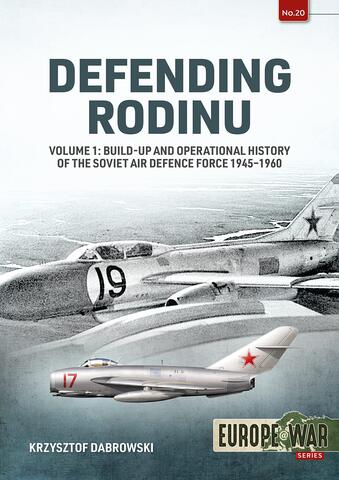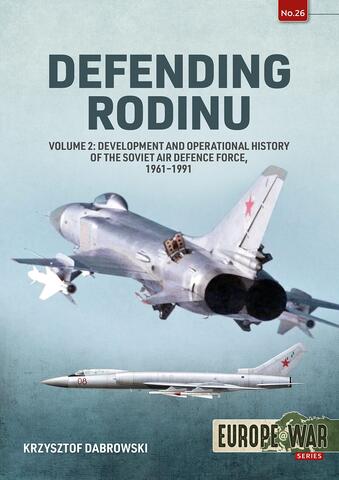Defending Rodinu


Today's Ukrainian-Russian war is dramatically reminding us all of the defensive power wielded by modern Surface to Air (SAM) missile systems and interceptors. Perhaps no military establishment in the world has more experience operating interceptors, ground-based radars, and surface to air missile systems than Russia.
However, creating world class combat aircraft such as the SU-57, and missile defense systems such as the S-400 (one of the best of its class fielded by any military today) didn't happen overnight. It took decades and enormous expense in an effort that began immediately following the Second World War. At that time, and as shown in Volume I the Soviet Air Force fielded piston-engine La-11 interceptors, ground-based anti-aircraft cannon, and primitive radars incapable of covering its extensive borders.
Soviet researchers were just like American scientists in building off of work done by the Nazi's during World War II. However, Soviet scientists ultimately took their research in new and exciting directions that nevertheless took time to come to fruition. Ultimately, this would lead to the late Cold War era antecedents of today's modern weapons not only locking down the entirety of Russia's lengthy borders, but also facing off in Europe's largest war since World War II.
Focused on the Cold War fought between the United States and its allies against the Soviet Union (taking place from 1945 to 1991), Krzysztof Dabrowski's two-volume set ably tracks the creation, organization, equipping, and operational deployment of the Soviet Union's air defense troops (PVO). These volumes are not about Soviet tactical aviation or even the larger VVS (Soviet Air Force), but are strictly about the radars, missiles, and interceptors tasked with guarding Soviet borders.
Note that these are not books focused merely on technical specifics. Both volumes contain large sections devoted to the PVO's operational employment. The 1950's to the early 1960's proved a particularly intense time, one marked most notably by the PVO's shoot-down of Francis Gary Powers' U-2 in 1960. Generally, the PVO is portrayed as what it was - an organization very much learning on the fly. The PVO's numerous failures are analyzed here along side it's impressive victories. One cannot help but admire what the PVO accomplished, but the shoot-down of civilian airliners such as th Korean 747 in 1983 is simply inexcusable and reflects poorly on the PVO's professionalism. Of course all of that and more is detailed in these pages, including other notable Cold War interactions of a controversial nature which occured in the skies above and near the Soviet borders.
These books are well worth your purchase. They are not only interesting and well-researched, but extroardinarily timely considering the evidence seen today in the skies over the Ukraine regarding the effectiveness of the respective combatant's air-defense systems.



Post new comment